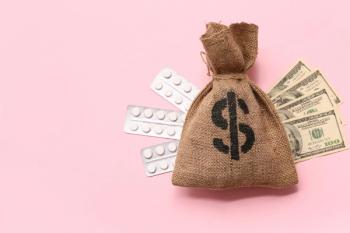
ROI model confirms value of pharmacy services
Pharmacists can and should prove that their treatments provide a significant return on investment (ROI), said Fred Pane, R.Ph., senior director of pharmacy affairs at Premier Inc., the San Diego group purchasing organization. "Pharmacists can move from a compartmentalized budget and expense analysis model to an overall cost-of-care model," he said. "The data exist to establish that the work they do generates the best patient outcomes, with a positive effect on overall costs and reimbursements."
In order to establish ROI as drug costs escalate and overall reimbursements decline, pharmacists must be familiar with payer contracts. That allows them to calculate reimbursement for each dose of a drug. Then pharmacists should gather data to demonstrate the value-added worth of a specific drug, including reduced morbidity, decreased lengths of stay (LOS), and reduced demand on staff and resources.
Although it sounds simple, such balanced-scorecard rationales are far from common practice in health-system pharmacy departments. Pane's model to establish pharmacy ROI is inventive, and he is quick to say it is in the development stage. He noted, however, that ROI models are already commonly applied by hospitals to the acquisition of medical equipment, including the robotic tools found in virtually all health-system pharmacies. Therefore, the model allows for easier dialogue with the people most involved with the bottom line: the acquisition, accounting, and billing departments.
Elaine Levy, R.Ph., system director of pharmacy services for Sharp HealthCare's seven hospitals in the San Diego area, believes Pane's emerging ROI model has significant potential for improved communication between her system's pharmacy and financial departments-a dialogue she believes is critical to quality care. "Drugs are increasing in cost as reimbursements are falling," she said. "We must speak the language of our financial people if we are to help them understand the relevance of clinical data. Fred's ROI model is in the infancy stage, but it is a great first step."
Pane has created the hybrid term thereconomics to delineate his model, combining the words therapy and economics. "For years, pharmacy managers have dealt with the budgetary issues surrounding pharmaceuticals," he said. "That economic model is called pharmacoeconomics, and it was created to try to explain the value of drugs. However, it is very difficult to meet with hospital finance staff and explain pharmacoeconomics. It relates only to pharmaceuticals and doesn't address the big issue, which is the various patient treatment options, both drug and nondrug, and how they replace each other or support clinical outcomes."
This is especially true in relation to system ambulatory settings, said Pane. "Reimbursement is dictating patient treatment environments," he said. "The effect on system pharmacy departments is that outpatient drug expenses are growing faster than inpatient drug expenses and are becoming a larger part of the total drug budget. More expensive drugs and more drug options are causing some hospital pharmacy departments to exceed their drug budgets by 50% or more. But outpatient treatment settings contribute to decreased inpatient lengths of stay and improved inpatient efficiencies."
For example, most cancer patients were once treated almost exclusively in inpatient settings. Today, in many hospitals the majority of cancer patients are treated in ambulatory settings. And the use of glycoprotein IIb/IIIa agents with a stent is replacing many open heart procedures. "Pharmacy may be spending more on drugs per case than the department spent for an inpatient stay for an open heart procedure," said Pane. "But the overall cost to the system is lower than it used to be. What better way is there to clearly demonstrate an ROI for a drug-shortened LOS, less fixed cost per case, and tie those numbers into the contribution this is making to overall hospital efficiency by freeing up inpatient beds?"
ROI models will need to be adjusted for each treatment setting, said Levy, but "what is clear is that this simple idea is great for explaining to financial officers that though drug costs are rising and so are our overall budgets, on balance, effective pharmacy care has a very positive effect on their bottom line."
THE AUTHOR is a healthcare writer based in Gettysburg, Pa.
Newsletter
Pharmacy practice is always changing. Stay ahead of the curve with the Drug Topics newsletter and get the latest drug information, industry trends, and patient care tips.



























































































































































